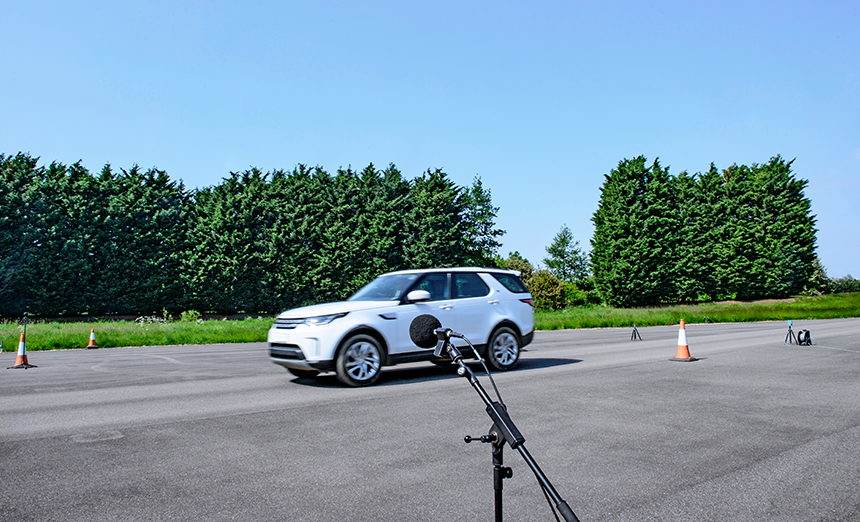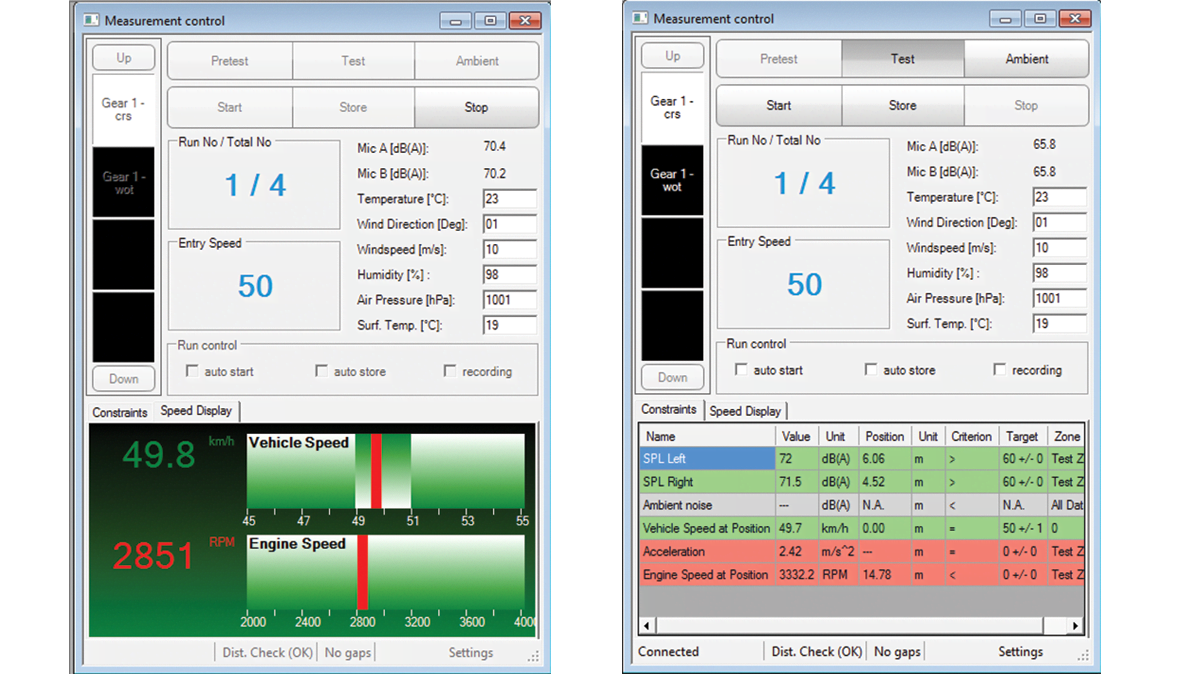TYPE 7788
Outdoor vehicle pass-by noise software
For making field pass-by noise tests to ISO standards, and correlating exterior noise with sound sources measured on the vehicle.
Angebot anfordernThis PULSE software measures the exterior noise emissions of a vehicle as it passes trackside microphones. The software works together with two data acquisition units. One is located by the microphones, and the other is located in the vehicle, with a PC. After a test run, this software gathers the data in the vehicle, and synchronizes the two data sets using GPS time stamps.
The software’s optimized control interface has large buttons for easy operation by one person in the vehicle. To help the user follow the correct procedures such as target vehicle and engine speeds, the interface displays ambient sound pressure, weather parameters, and vehicle and engine speed information. A pretest function helps select the correct entry speed and correct gear(s) for testing. After a test run, the software shows a summary of the run results. The pass-by measurement results are calculated, displayed and stored on the vehicle’s data acquisition unit and PC, providing immediate validation to the driver. To make it convenient for the driver, a separate tablet can be used to view this data.
USE SCENARIOS
- Noise source contribution assessment for component suppliers and vehicle manufacturers
- Testing days with multiple vehicles on the same track, in random order
- Single-person test operation
- Two-wheeler testing
- Official declaration of automotive pass-by noise levels for UN/ECE regulations
The software merges the exterior noise data with the vehicle’s data, which can be taken from onboard diagnostics systems, such as RPM, or from radar or GPS data, to obtain the vehicle’s speed. The software can also incorporate sound and vibration data measured on the vehicle using microphones or accelerometers. This allows exterior noise at the ISO pass-by standard positions to be precisely correlated with on-vehicle measurements, to compare spectra and levels.
MULTIPLE VEHICLES
Measurement data from both stations can be merged automatically after each test run via WiFi. Because data is recorded, the parallel datasets on the two PCs can be synchronized at any time, ensuring high‐quality test results even under difficult wireless transmission conditions. This also allows multiple vehicles to run on the same trackside setup, each with their own in-vehicle acquisition unit – maximizing the use of the test track.
CAPABILITIES
- Pass-by noise tests of accelerating road vehicles to ISO 362:1998, ISO 362 – 1:2012 for Type M (light vehicles) and Type N (trucks) category vehicles; and ISO 362 – 2:2012 for Type L category vehicles (two-wheelers)
- Exterior noise according to ISO 3325 (tyres) and ISO 5130 (exhaust noise)
- Conformance to ISO test procedure-based regulations such as UN/ECE R51.03 (noise emission of M and N category vehicles), UN/ECE R41.04 (noise emission of L category (motorcycles) and UN/ECE R117 (tyre noise)

Abonnieren Sie unseren Newsletter zum Thema Schall und Schwingung


